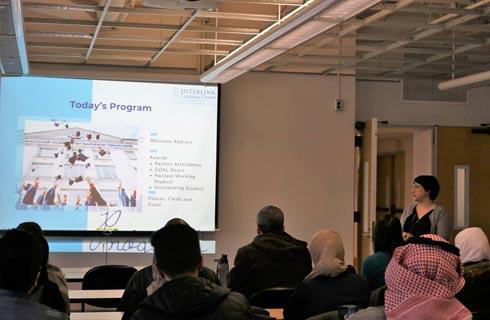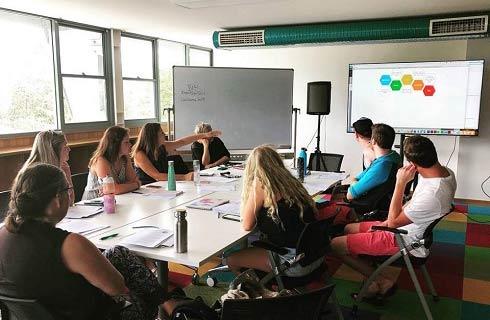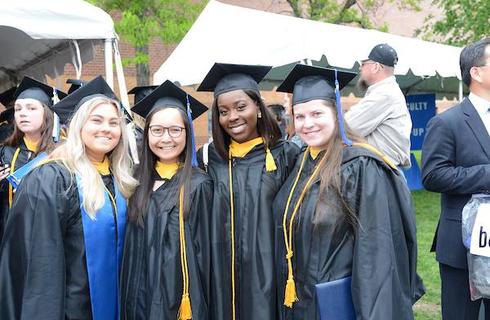- IDP China>
- 课程库>
- 计算机科学>
- 计算机与信息科学>
- 计算机科学>
- Honours Bachelor of Science in Computer Science - Scientific Computing - St.George
荣誉计算机科学理学士学位-科学计算
Honours Bachelor of Science in Computer Science - Scientific Computing - St.George

学历文凭
Bachelor Degree with Honours

专业院系
Department of Computer Science

开学时间

课程时长

课程学费

国际学生入学条件
IDP—雅思考试联合主办方

雅思考试总分
6.5
- 雅思总分:6.5
- 托福网考总分:89
- 托福笔试总分:160
- 其他语言考试:Pearson Test of English (PTE) Academic - Overall score of 65 with no part below 60.
CRICOS代码:
申请截止日期: 请与IDP联系 以获取详细信息。
课程简介
Despite the name, Computer Science is not really a science of computers at all. Computers are quite remarkable electronic devices, but even more remarkable is what they can be made to do: simulate the flow of air over a wing, manage communication over the Internet, control the actions of a robot, synthesize realistic images, play grandmaster-level chess, learn how to automatically translate between languages, and on and on. Indeed, the application of computers in activities like these has affected most areas of modern life. What these tasks have in common has little to do with the physics or electronics of computers; what matters is that they can be formulated as some sort of computation. This is the real subject matter of Computer Science: computation, and what can or cannot be done computationally.In trying to make sense of what we can get a computer to do, a wide variety of topics come up. There are, however, two recurring themes. The first is the issue of scale: how big a system can we specify without getting lost in the design, or how big a task can a computer handle within reasonable bounds of time, memory, and accuracy A large part of Computer Science deals with these questions in one form or another. In the area of programming languages and methodology, for example, we look for notations for describing computations, and programming methodologies that facilitate the production of manageable and efficient software. In the theory of computation area, we study resource requirements in time and memory of many basic computational tasks.The second theme concerns the scope of computation. Computers were originally conceived as purely numerical calculators, but today, we tend to view them much more broadly. Part of Computer Science is concerned with understanding just how far computational ideas can be applied. In the area of artificial intelligence, for example, we ask how the function of the human brain can be expressed in computational terms. In the area of human-computer interaction, we ask what sorts of normal day-to-day activities of people might be supported and augmented using computers. Scientific computing studies the world around us. Known and unknown quantities are related through certain rules, e.g. physical laws, formulating mathematical problems. These problems are solved by numerical methods implemented as algorithms and run on computers. The numerical methods are analyzed and their performance (e.g. accuracy, efficiency) studied. Problems, such as choosing the optimal shape for an airplane (to achieve, for example, minimal fuel consumption), finding the fair price for derivative products of the market, or regulating the amount of radiation in medical scans, can be modelled by mathematical expressions and solved by numerical techniques.
相关申请
 预科
预科 奖学金
奖学金 实习机会
实习机会 在校学习
在校学习 跨境学习
跨境学习 校园授课-线上开始
校园授课-线上开始 在线/远程学习
在线/远程学习
开学时间&学费
学费信息仅供参考,请与IDP联系以获取详细信息
| 开学时间 | 时长 | 学费 | 地点 |
|---|
学校排名

世界排名21
数据源:
泰晤士高等教育世界大学排名
关于多伦多大学

多伦多大学(University of Toronto),始建于1827年,坐落在加拿大的第一大城市多伦多,是加拿大的一所顶尖学府,亦为加拿大传统四大校之一。安大略省政府及议会环绕在市中心的女王公园四周,现已发展成为一所“一主两翼”格局的世界知名研究性大学--坐落于市中心的圣乔治校区(St. George),历史最为悠久,与3个更小的大学联盟并有享有七大学院制,与十座教学医院有着密切关系;东西向延伸至世嘉堡与密西沙加,UTSC有着乡村般的风光,风景别致,搭乘TTC一小时路程;UTM则是在西边,有校车往返。在学术及研究方面,多伦多大学一直处于领先地位。其经费、捐款、国家教授奖项、研究出版规模和藏书量皆为加拿大之首。多伦多大学出版社在加拿大乃至全北美影响深远。实行独立书院制的学府,荣获诺贝尔奖的教授人数是加拿大最多的。维多利亚学院是其最富有的学院之一 提供更多奖学金和相关设施。多伦多大学亦为美国大学协会中仅有的两所非美国学府之一。多伦多大学每年发表的科研论文数量在北美仅次于哈佛大学,引用数量位居世界前五。主要贡献:干细胞及胰岛素的发现,电子起搏器、多点触摸技术、电子显微镜、抗荷服的发明和发展,NP完全理论,以及发现首个经核证的黑洞。
本校相关课程
其他相关课程

计算机科学哲学博士-量子信息
 滑铁卢大学
滑铁卢大学学历文凭
Ph.D.
开学日期
课程费用总额


计算机科学数学硕士-量子信息
 滑铁卢大学
滑铁卢大学学历文凭
Masters Degree
开学日期
课程费用总额

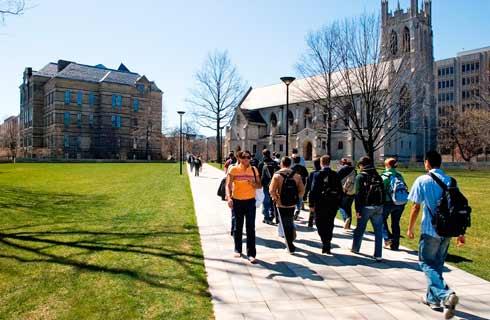
计算机科学哲学博士
 滑铁卢大学
滑铁卢大学学历文凭
Ph.D.
开学日期
课程费用总额


计算机科学理学硕士
 劳伦森大学
劳伦森大学学历文凭
Masters Degree
开学日期
课程费用总额


计算机科学学士学位(3年)
 劳伦森大学
劳伦森大学学历文凭
Bachelor Degree
开学日期
课程费用总额

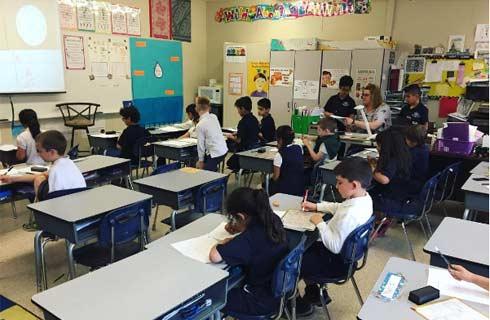
计算机科学文学士学位(3年)
 劳伦森大学
劳伦森大学学历文凭
Bachelor Degree
开学日期
课程费用总额











